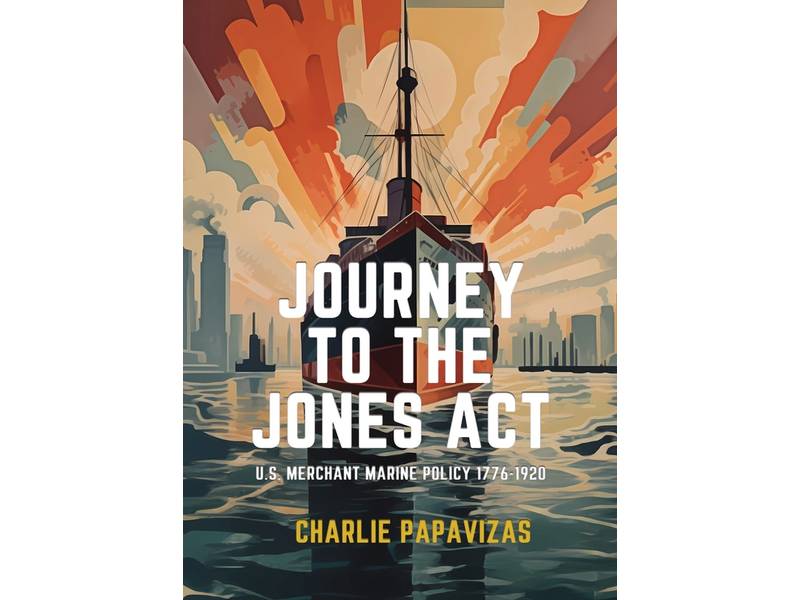Deflating Mythology: New Book Unpacks the History Behind the Jones Act
The impacts of Section 27 of the Merchant Marine Act of 1920, today commonly referred to as the Jones Act, are often debated in maritime circles. But the well-known U.S. law, which requires vessels that transport goods between U.S. ports to be American-built, -flagged, -owned and -crewed, hasn’t always been a hot button issue, according to Charlie Papavizas, author of a new book on the subject, Journey to the Jones Act: U.S. Merchant Marine Policy 1776-1920.
A leading maritime attorney, Papavizas has been helping his clients navigate the Jones Act for nearly 40 years, and he said his new book arose, in part, to help set the record straight. The law and its origins, he said, are often misunderstood, and somewhere along the line, a false mythology was created. “I wanted to write a proper history of how we got to the Merchant Marine Act of 1920, and to give it its due as a whole, rather than the part that everybody complains about or thinks is the greatest thing since sliced bread.”

Section 27, it turns out, was only a very small piece of what Senator Wesley Livsey Jones was doing when he introduced the Merchant Marine Act. Before setting out to write the book, Papavizas had a sense that this was the case, that what is today known as the Jones Act was of lesser importance in 1920. “What I didn’t expect to find,” he said, “was that it was of no importance, not lesser importance.”
“After the act was signed by President Wilson in June 1920, as often happens after a law gets enacted, there was controversy about certain provisions. [Section 27] wasn't one of them. There was no controversy. There was no discussion,” Papavizas said. “What that showed to me in spades is that what happened in 1920 was just part of an evolution. It was not a culmination point. It was not the beginning of a policy that everybody says it is.”
In Journey to the Jones Act, Papavizas unpacks the history behind what has evolved to take on a life as the United States’ most newsworthy and controversial maritime policy law.
Related News


